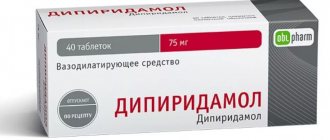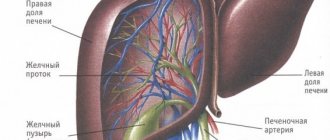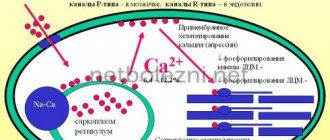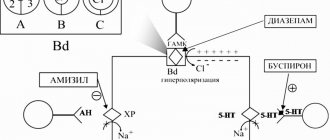Home>Articles>Hepatoprotectors: effectiveness and classification
quick menu (hide)
- How the medicine works
- Liver diseases and hepatoprotectors
- Types of hepatoprotectors
- How the medicine is used
- Liver functions
- The effect of alcoholism on the liver
Most alcohol is processed in the liver. It very seriously damages this organ, both directly by killing cells and indirectly.
Hepatoprotectors are drugs that smooth out the negative effects and increase the toxic threshold of alcohol. They are divided into several types depending on their composition. From this article you will learn:
- about the concept and “working principle” of hepatoprotectors;
- about whether the appearance and development of alcoholic liver disease can be prevented with the help of hepatoprotectors;
- about the types of hepatoprotectors;
- about why people who drink need to take hepatoprotectors;
- about liver functions;
- about how addiction to alcoholic beverages affects the liver.
Indications for use
Hepatoprotector drugs are used for liver pathologies of various origins: acute and chronic hepatitis, liver cirrhosis, fatty degeneration (fatty degeneration of the liver) with alcoholism and obesity, hepatic encephalopathy, hepatic coma, liver necrosis.
In addition, certain hepatoprotector drugs are used for poisoning with liver poisons - alcohol, paracetamol, toadstool, as well as for liver damage due to diabetes mellitus.
Morpholinium salt of thiazotic acid is also prescribed for heart diseases: coronary heart disease - stable, vasospastic and unstable angina, in the complex treatment of myocardial infarction; chronic heart failure; cardiomyopathies (dilated, alcoholic, drug-induced, metabolic, infectious and parasitic diseases); myocarditis; myocardial dystrophy; cardiosclerosis.
Ademetionine is additionally used for depressive syndromes.
Pumpkin seed preparations are also used in the complex treatment of benign prostatic hyperplasia (prostate adenoma).
Ursodeoxycholic acid preparations are additionally used in the treatment of cholelithiasis.
When are drugs from this group prescribed?
Russian pharmacies offer a wide selection of liver cleansing drugs, which are very popular. The cost of the therapeutic course is expensive for patients, although not everyone feels the result. Discussions about the appropriateness and necessity of such treatment in medical circles have been going on for a long time; in our country, a doctor can prescribe hepatoprotectors in the following cases:
- For fatty hepatosis (fatty liver). Hepatoprotectors are used as part of complex therapy, which includes: a low-fat diet, antidiabetic drugs, and regular exercise.
- After chemotherapy. The hepatoprotective agent helps to gradually restore the liver.
- For viral hepatitis. Medicines are prescribed if antiviral drugs do not show the expected effect or for any reason antiviral therapy is impossible.
- For liver cirrhosis caused by alcoholism. In this case, the main step towards recovery is to stop drinking alcohol, otherwise hepatoprotectors will be absolutely useless.
- For toxic hepatitis (after taking antibiotics). Hepatoprotectors are effective in combination with other drugs to restore the liver, diet, and giving up bad habits.
- With enlarged liver (hepatomegaly). For rapid regeneration of organ cells and normal functioning of the organ, hepatoprotectors are used.
pharmachologic effect
Hepatoprotectors activate metabolism and increase energy balance at the level of liver cells (hepatocytes). Hepatoprotectors also stimulate the processes of tissue respiration, the synthesis of nucleic acids and the formation of proteins, and restore the cellular structure of the liver.
Hepatoprotector drugs stimulate the antitoxic function of the liver and increase its resistance to adverse factors.
Hepatoprotectors of plant origin additionally have a mild choleretic effect, preventing stagnation of bile in the gallbladder.
Ursodeoxycholic acid preparations dissolve cholesterol stones in the gall bladder.
Certain hepatoprotectors activate metabolism, increase energy balance and normalize tissue respiration in the heart, thereby providing a cardioprotective effect.
Ademetionine has a stimulating, antidepressant effect.
Aluminum mefenamate additionally has a pronounced anti-inflammatory effect.
Classification of hepatoprotector drugs
Hepatoprotector drugs are classified into:
- hepatoprotectors of plant origin: silibinin, silymarin, milk thistle fruits, artichoke extract, pumpkin seed extract, smoke extract, turmeric rhizome, yarrow herb, chicory root, as well as their combinations;
- hepatoprotectors of animal origin: cattle liver extract;
- hepatoprotectors of synthetic origin: aluminum mefenamate, morpholinium salt of thiazotic acid;
- preparations of essential phospholipids: soy phospholipids, lecithin;
- amino acid preparations: arginine glutamate, ornithine oxoglurate, ademetionine, methionine;
- ursodeoxycholic acid preparations: ursodeoxycholic acid;
- lipoic acid preparations: lipoic (thioctic) acid.
Basics of treatment with hepatoprotector drugs
The pronounced pharmacological effect of hepatoprotectors develops after 20-30 days from the start of administration, reaching a maximum after 2-3 months of treatment. Therefore, hepatoprotectors should be used in courses of 3-4 months (in some severe cases - up to six months). The course of treatment can be repeated 2-3 times a year.
All hepatoprotector drugs are quite safe in terms of side effects. The only limitation to their use is individual intolerance to the drug. Some drugs (for example, based on artichoke fruits) are even recommended for use in the complex treatment of pregnancy pathologies.
Reviews from people
We have selected some reviews from people who have used various hepatoprotectors:
- Maria. I used to have serious problems with the liver, so for prevention I take a course of hepatoprotectors once a year. I’m not sure whether they help me or not, but I haven’t felt any deterioration in my health for 5 years now. When I was a teenager, I was treated with Essentiale - the drug helped a lot, and as a form of prevention I prefer something homeopathic or milk thistle decoctions.
- Anton. I have had epilepsy since I was 21. As soon as anticonvulsant therapy was selected, the neurologist prescribed Karsil. I didn’t believe I would need it because I was taking handfuls of PEP and didn’t want to add more medication to it. But after 3 years, liver tests worsened, and I had to cleanse my liver. Since then I have been taking hepatoprotectors twice a year and following diet No. 5.
- Egor. I underwent a two-week liver cleanse with Heptral as a preventive measure, since I often drink red wine, eat fatty meats and other “healthy” foods. There were no obvious changes in my health, but my health had never bothered me before. The only big advantage of taking the hepatoprotector that I noted was the improvement in intestinal perilstatics.
- Veronica. She was registered with her illness and regularly donated blood. The drug Phosphogliv was prescribed to me by my attending physician. I can’t say that it somehow protected my liver and improved my condition. It happened that I did not take hepatoprotectors for years, and sometimes I drank it regularly. I didn't notice any difference. Each time I used them I felt sick and, interestingly, I got a runny nose. When the diagnosis was finally removed and the main treatment stopped, the liver tests returned to normal. This was not associated with hepatoprotectors. As soon as I stopped taking the medications, everything returned to normal. I consider these drugs to be a common money grab.
- Alexei. When I underwent a medical examination at the enterprise, doctors strongly recommended treating my liver, as there was a possibility of developing cirrhosis. I spent three weeks in the hospital, was given a course of heptral, and after discharge I continued treatment with the hepatoprotector on my own. Two months of therapy cost me 12 thousand rubles, but my health improved. The latest examination showed a significant improvement in the condition of the organ.
Features of treatment with hepatoprotector drugs
It is advisable to use arginine glutamate preparations for acute toxic liver damage, for example, from alcohol - amino acids neutralize the final and intermediate products of ethanol metabolism.
Ademetionine preparations are recommended for use in cases of disorders of the central nervous system due to liver diseases. Considering the stimulating effect of ademetionine, it is better to use drugs based on it in the first half of the day so as not to disturb sleep.
Preparations based on essential phospholipids and methionine are used for fatty liver due to atherosclerosis.
Aluminum mefenamate is recommended for use in cases of severe inflammatory processes in the liver and pancreas (pancreatitis).
Lipoic (thioctic) acid preparations are additionally used for complications of diabetes mellitus, including liver complications.
The pathogenetic mechanisms of liver damage are very diverse, but they are all characterized by cellular damage, accompanied by an inflammatory reaction, cytolysis and the development of fibrosis. A similar scenario for the development of a pathological process, albeit with a different initiating mechanism at the start, can develop with viral hepatitis, toxic liver damage, autoimmune hepatitis, metabolic syndrome and other forms of acute and chronic liver damage. It is obvious that in all the mentioned cases, the center of organopathology remains the hepatocyte - the main cell of the liver parenchyma. And if for a number of diseases, primarily viral hepatitis, etiotropic therapy has now been developed that can also have a pathogenetic effect (proven reduction in inflammation, cytolysis and fibrosis under the influence of, for example, interferons a or nucleoside analogues), then in most other cases of damage to the liver parenchyma, the evidence base regarding the effectiveness of the use of various groups of drugs that claim to be a savior of hepatocytes has not yet been established [6, 8, 10].
Nevertheless, there is a fairly wide range of drugs called “hepatoprotectors”. Based on the name, these drugs must somehow universally protect the liver cell under a variety of damage mechanisms [1]. Hepatoprotectors are very heterogeneous in their chemical composition and, as follows from the instructions of the drugs, have multidirectional effects on metabolic processes. Despite many years of clinical experience and numerous scientific studies (in most cases not meeting the principles of clinical studies with a high level of evidence), the boundaries of the use of hepatoprotectors have not yet been delineated. In this publication, the authors tried to give pharmacological characteristics of the main hepatoprotectors and evaluate the results of their practical use in patients with chronic liver damage [1, 6, 10].
Essential phospholipids
In Russia, this group of drugs is the main type of hepatoprotectors, although in the European Union it is little known to a wide range of practicing physicians. To understand the mechanism of the protective effect of essential phospholipids, it should be taken into account that all cell membranes have a fairly typical structure and approximately 75% (mitochondrial membrane is 92%) consist of phospholipids, the basis of which is phosphatidylcholine. In addition to their structural function, phospholipids are involved in the processes of molecular transport, cell division and differentiation, and stimulate the activity of various enzyme systems [1]. Direct damage to the cell membrane is caused by ethanol, some poisons and drugs. In general, damage to the hepatocyte membrane always occurs with any liver damage, however, it is realized through more complex and subtle mechanisms through interaction with circulating immune complexes, autoantibodies, etc. In this regard, count on stabilizing liver damage only by strengthening the hepatocyte cell membrane by supplying from outside the “building material” (phospholipids), without eliminating the main pathogenetic cause of hepatocyte lysis, is not necessary. For example, in classic autoimmune hepatitis or viral hepatitis B, which are based on immune mechanisms of liver damage, it is clear that the main etiopathogenetic agents will be corticosteroids and/or cytostatics, and the use of essential phospholipids in these cases seems to be very ephemeral.
The main functions of phospholipids are to maintain normal fluidity and repair of cell membranes, antioxidant action, protect mitochondrial and microsomal enzymes from damage, slow down collagen synthesis and increase collagenase activity. These mechanisms underlie their physiological antifibrotic effect. Taking into account the basic mechanisms of etiopathogenesis of various liver diseases, this group of drugs can be used, for example, for alcoholic liver steatosis and non-alcoholic hepatopathy as part of the metabolic syndrome [1, 10].
As some studies show, this group of drugs improves biochemical parameters and the general well-being of patients, but in some cases phospholipids can induce the development of cholestasis [1, 5].
Silymarin . The complex preparation silymarin contains a mixture of milk thistle alkaloids, the main active ingredient being silibinin. As follows from the instructions, the drug has hepatoprotective and antitoxic properties. The mechanism of its action is associated with the suppression of lipid peroxidation, as a result of which damage to cell membranes is prevented. In hepatocytes, the drug stimulates the synthesis of proteins and phospholipids, which leads to the stabilization of cell membranes and a decrease in their permeability. As a result, silymarin prevents the loss of cell components, including transaminases, which is clinically manifested by a decrease in cytolytic syndrome. In addition, silymarin prevents the penetration of certain hepatotoxic substances into the cell, in particular the poisons of the toadstool - phalloidin and amanitin. However, there is no convincing data demonstrating a significant increase in the survival rate of patients with acute toxic hepatitis caused by toadstool when taking silymarin in the available literature. Recently, studies have begun to appear in which the antifibrotic properties of silymarin have been discovered, however, the main objects of these studies are patients with metabolic disorders and hepatic steatosis [5, 8].
Ademethionine (S-adenosyl-L-methionine) is a natural substance endogenously synthesized from methionine and adenosine. Ademetionine is involved in at least three types of biochemical reactions: transmethylation, transsulfuration and polyamine synthesis. Transmethylation reactions are an important step in the synthesis of phospholipids (primarily phosphatidylcholine), ensuring membrane fluidity and their polarization, which plays a significant role in the synthesis of bile. Impaired transsulfuration leads to a deficiency of glutathione, the most important cellular antioxidant. Lack of glutathione reduces the resistance of hepatocytes to the damaging effects of free radicals. In addition, ademetionine serves as a precursor to other thiol compounds, such as cysteine, taurine, coenzyme A. Finally, the third group of reactions in which ademetionine takes part, the synthesis of polyamines, is directly related to the processes of hepatocyte proliferation and liver regeneration. Experimental and clinical data indicate the antioxidant and detoxifying effects of ademetionine, as well as the acceleration under its influence of liver tissue regeneration and slowdown of the development of fibrosis.
The most convincing clinical results of using ademetionine were obtained in alcoholic liver disease. With the use of ademetionine in patients with alcoholic cirrhosis, an increase in the initially reduced concentrations of glutathione, cysteine and taurine in the blood serum and liver tissue was noted, which indicates the normalization of metabolic processes. It is known that the main toxic product of ethanol metabolism, acetaldehyde, blocks the glutathione reduction system, which causes damage to hepatocytes by lipid peroxidation products. Ademethionine, being a donor of the sulfhydryl group, helps eliminate glutathione deficiency. In addition to a significant decrease in the level of serum bilirubin, transaminases and g-glutamyl transpeptidase, there is preliminary evidence of a statistically significant increase in survival of patients with alcoholic cirrhosis.
Another area of application of ademetionine is cholestatic liver diseases, in which it is possible to achieve a significant reduction in itching and a decrease in cholestasis enzymes. There is information about the pronounced positive effect of ademetionine in drug-induced cholestasis. In addition to hepatoprotective properties, ademetionine also has an antidepressant effect, the mechanism of which is far from fully understood [1, 5, 8].
Ursodeoxycholic acid (UDCA) is a substance belonging to the group of hydrophilic bile acids. The mechanisms of action of UDCA are complex and have not been fully studied to date. The most likely are cytoprotective and choleretic effects due to competitive inhibition of the absorption of toxic hydrophobic bile acids in the ileum. It has been established that the cytoprotective effect of UDCA on biliary epithelial cells is realized by preventing the release of cytochrome C from mitochondria, which in turn blocks the activation of apoptosis of cholangiocytes and caspases. UDCA also has an immunomodulatory effect, reducing the expression of HLA molecules (Human Leucocyte Antigen) classes I and II on biliary epithelial cells and reducing the production of proinflammatory cytokines (interleukins -1, -2, -6, interferon-gamma). UDCA reduces the saturation of bile with cholesterol by inhibiting its absorption in the intestine, suppressing synthesis in the liver and reducing secretion into bile; increases the solubility of cholesterol in bile through the formation of liquid crystals; reduces the lithogenic index of bile, increasing the content of bile acids in it. Such diverse mechanisms of action are caused by the variety of indications for the use of UDCA.
In primary biliary cirrhosis, UDCA is the drug of choice, not only improving clinical (reduction of weakness, itching, jaundice), biochemical (reduction of cytolysis enzymes and cholestasis) and histological (reduction of liver tissue inflammation) indicators, but also increasing the life expectancy of patients, as demonstrated in numerous clinical studies [1, 5, 8]. The prescription of the drug is pathogenetically justified for diseases accompanied by intrahepatic cholestasis, such as primary sclerosing cholangitis, chronic hepatitis with a cholestatic component (especially alcoholic and drug-induced), cystic fibrosis, atresia of the intrahepatic biliary tract, post-transplantation cholestasis, cholestasis during parenteral nutrition. In addition, UDCA is used to dissolve cholesterol gallstones and for biliary reflux gastritis.
Glycyrrhizic acid . The first mention of the medicinal properties of this compound is found in the papyri of the ancient Egyptian physician Eberus, where he reports on the medicinal properties of licorice, which was used for a number of diseases. In the middle of the last century, the Czech scientist L. Ruzicka deciphered the chemical structure of glycyrrhizic acid, emphasizing its similarity to the steroid structure. Glycyrrhizin is a calcium or potassium salt of tribasic glycyrrhizic acid, the aglycone of which is glycyrrhetic acid, and the carbohydrate part is represented by two molecules of glucuronic acid. To date, the anti-inflammatory, antiallergic, antiviral and immunomodulatory properties of this compound have been described. For the first time, the antiviral effect of glycyrrhizin against the herpes simplex virus, varicella zoster virus, and others was reported by Pompei R. et al. The studies were initially carried out in vitro, and subsequently these data were confirmed in laboratory animals by other researchers, in particular with regard to duck hepatitis A (HAV) and B (HBV) viruses [3, 4].
Takahara T. et al. studied the effect of glycyrrhizin on HBV. It has been established that glycyrrhizic acid modifies the glycosylation and sialylation of the surface antigen of the hepatitis B virus (HBsAg), leading to its retention in the Golgi apparatus, which apparently explains its positive effect in the treatment of HBV infection [11]. The mechanisms of the antiviral action of glycyrrhizin during HCV infection remain unknown to date. However, stimulation by glycyrrhizin of the synthesis of interferon-gamma with subsequent activation of macrophages and B-lymphocytes, increased phagocytosis and antibody production, and activation of NK cells undoubtedly contributes to the course of chronic hepatitis C. At the same time, inhibition of protein kinase P by glycyrrhizin entails inhibition of phosphorylation proteins encoded by the virus in infected cells causes CD4+-mediated cytotoxicity
T cells and tumor necrosis factor alpha. Glycyrrhizin in the receptor sites of the membrane inhibits the penetration of the virus into the cell by blocking carbohydrate enzymes, which indicates a possible suppressive effect directly on the viral RNA (HCV RNA) [8, 9]. In addition, Abe Y. et al. report that, unlike interferon-alpha, which inhibits the late stage of the viral replication cycle, glycyrrhizic acid is active at its early stage [3].
The results of clinical studies of the effectiveness of glycyrrhizic acid in patients with chronic hepatitis remain controversial. Firstly, there are practically no randomized placebo-controlled studies; secondly, most studies do not take into account the effect of glycyrrhizic acid on viral load and liver histology; thirdly, a stable response to the use of glycyrrhizin has not been obtained and there is no data on the effectiveness of its use in compared to interferon-alpha. According to the literature, Japanese doctors have the greatest experience in the practical use of glycyrrhizin, but it is obvious that glycyrrhizin has a proven positive effect in reducing the risk of developing hepatocellular carcinoma in patients with chronic viral hepatitis, especially those who do not respond to treatment with interferon alpha [7, 12, 13 ].
Extremely interesting in this sense is the recent publication by German researchers on the results of a phase II blind, placebo-controlled, randomized trial of the effectiveness of glycyrrhizin in patients with chronic hepatitis C who had not previously responded to antiviral therapy with interferon-alpha. It demonstrated a very rapid biochemical response (after two weeks of treatment), although without a significant effect on viremia. In some patients, after 6 months of therapy, a histological examination of the liver was performed, but no significant effect of the drug on the degree of fibrosis was detected [9]. At the same time, phase III clinical trials, where the use of glycyrrhizin continued for at least 12 months, demonstrated, along with an unconditional biochemical response to treatment in more than 78% of patients, a reduction in fibrosis in 2/3 of these patients [2].
The domestic dosage form of glycyrrhizin is the drug Phosphogliv, consisting of phospholipids obtained from soybeans or sunflower seeds, and glycyrrhizin itself. To increase the bioavailability of phospholipids, for the first time in the production of drugs of this group, essentially nanotechnologies were used. The drug can be considered as an equivalent to the Japanese drug Neominophagen, but unlike the latter, Phosphogliv is available in two dosage forms - tablets and powder for solution. The most promising injection dosage form of the drug has demonstrated effectiveness in fairly quickly reducing cytolysis and immune inflammation in patients with chronic viral hepatitis. This, according to the author, is explained precisely by the action of glycyrrhizin, the content and bioavailability of which is higher in the injection form. The tablet form of the drug can be classified as a drug containing phospholipids, since the amount of glycyrrhizin declared by the manufacturer in tablet form, as well as the pharmacokinetics and pharmacodynamics of glycyrrhizin administered orally, do not imply a pronounced biochemical response.
Our own experience of using Phosphogliv and the experience of colleagues allow us to position it as a drug with an active hepatoprotective effect, primarily in patients with viral liver damage, as an additional agent to standard antiviral treatment or as the main and, alas, only remedy for patients receiving antiviral treatment interferon-alpha is not indicated for any reason (chronic hepatitis C with a transplanted kidney, advanced stage of viral hepatitis, etc.) [2].
In addition, almost all researchers emphasize that prescribing Phosphogliv against the background of traditional antiviral therapy with interferon-alpha significantly minimizes the side effects of the latter. Phosphogliv should be used long-term, the patient should be oriented towards therapy for a period of a year or more. In this case, it is necessary to monitor the level of blood pressure and potassium content in the blood serum, since glycyrrhizin can cause symptoms of hyperaldosteronism in some patients, which, however, are quickly and reliably relieved by minimal doses of spironolactone on the day of injection and the day after it. Long-term administration of Phosphogliv in the form of injections does not cause the development of phlebitis, which is apparently due to the pronounced anti-inflammatory effect of the drug.
Of course, the effectiveness of Phosphogliv in patients with chronic diffuse liver diseases, primarily viral, needs to be studied. Taking into account the steroid-like chemical structure and biological action of glycyrrhizin, in our opinion, it would be extremely interesting to study the effect of the injectable form of the drug Phosphogliv in patients with attacks of acute alcoholic hepatitis or autoimmune hepatitis.
Despite a fairly wide range of drugs with hepatoprotective properties, they must be prescribed carefully and strictly differentiated. It is necessary not only to clearly understand the chemical structure of a particular drug, but also to know the results of its use, both according to literature data and taking into account the experience of colleagues. In this case, hepatoprotective drugs will receive a truly objective assessment of their effectiveness and safety profile.









